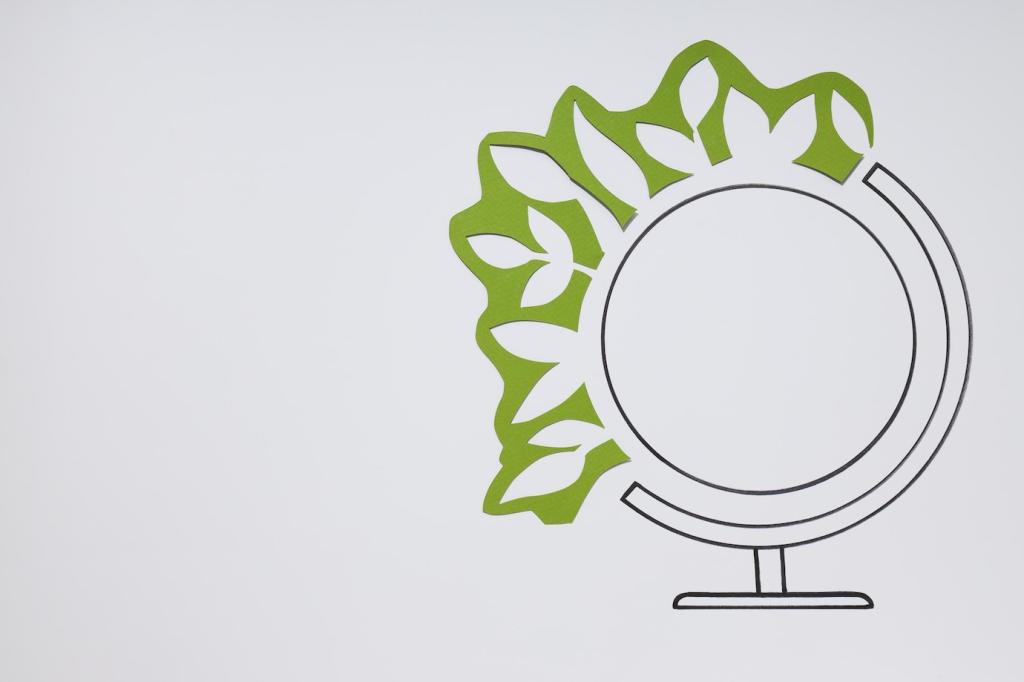
Creating Calm: Minimalist Design for Ecological Spaces
Today’s chosen theme: Creating Calm: Minimalist Design for Ecological Spaces. Welcome to a space where less feels generous, light is a material, and nature is the quiet co-designer. Settle in, explore ideas that breathe, and subscribe if calm, clarity, and planet-kind choices resonate with you.
Foundations of Calm: Minimalism Meets Ecology
Less, But Deeply Better
Minimalism here is not an aesthetic diet; it is a values filter. Keep what supports daily wellbeing, remove visual noise, and ensure every object earns its place. Clarity of choice reduces decision fatigue and nurtures calm, while creating measurable space for plants, airflow, daylight, and human connection.
Material Honesty and Planet Kindness
Favor renewable, certified, or recycled materials with traceable origins. FSC timber, bamboo, cork, recycled steel, and clay plasters offer tactile warmth and lower embodied carbon. Honest finishes age gracefully, telling a story rather than hiding it. Your calm grows when the home’s ingredients are trustworthy.
Designing for the Senses
Ecological minimalism tunes sight, touch, sound, and smell toward ease. Gentle textures, soft acoustics, and low-VOC finishes reduce stress cues. Daylight and views of greenery regulate circadian rhythms. When sensory inputs harmonize, rooms feel quieter without being empty, and simple routines start feeling like rituals.
Light, Air, and the Quiet Power of Nature
Prioritize window clarity, light-colored walls, and simple, breathable curtains. Place reflective surfaces to bounce light deeper, and keep clutter off sills. Studies show increased daylight can boost mood and focus while lowering energy use. Calm intensifies when morning light becomes your reliable, silent roommate.

Clarity Through Layout: Flow, Zones, and Quiet Edges
Map your daily movements and protect clear paths. If a chair constantly catches your hip, it is a design memo in disguise. Slide furnishings to frame routes, not block them. When feet move freely, breath often follows, and rooms immediately feel larger without buying a single new item.

Neutral Does Not Mean Bland
Think layered naturals: mushroom, oat, clay, lichen, cloud. These tones welcome shifting light and reduce contrast fatigue. Let one accent—olive or charcoal—steady the palette. Natural variation in wood grain or stone adds interest without noise, so rooms feel alive while staying noticeably restful.
Acoustic Comfort with Natural Materials
Wool rugs, cork panels, linen curtains, and books soften reverberation. Sound behaves like light; control reflections and edges calm. In open spaces, stagger soft surfaces across walls and floors rather than clustering them. The result is conversation at a lower volume and thinking that needs fewer pauses.
Low-VOC Finishes and Gentle Scents
Choose low- or zero-VOC paints, natural oils, and unscented or truly botanical cleaners. Chemical-heavy smells can signal danger to the brain, spiking alertness. Fresher indoor air supports calmer evenings and clearer mornings. If you love scent, use a sprig of rosemary or a single beeswax candle.

Furnish Less, Live More: Pieces with Purpose
01
Consider a bench that is entry seating, coffee table, and plant landing. Nesting tables expand for guests and tuck away daily. Modularity keeps spaces flexible and reduces impulse buys. The fewer items you need to shift for different activities, the calmer your home feels hour by hour.
02
Opt for FSC-certified wood, rapidly renewable bamboo, cork, recycled aluminum, and reclaimed stone. Limewash or clay plaster finishes regulate humidity and diffuse light softly. Durable, repairable materials invite long-term care rather than disposal. Calm steadies when your furniture’s story includes stewardship, not just style moments.
03
A neighbor salvaged a dented, solid-wood table from a closing cafe. Sanded, oiled, and set under a pendant, it hosted potlucks that stitched friendships. Minimalist choices need not be austere; they can be generous, turning rescued materials into furniture that invites community and thoughtful celebration.


Daily Rituals, Maintenance, and Community
Set a timer, return objects to their zone, water a plant, and clear one surface. This micro-ritual preserves the morning’s mood. Calm arrives not from perfection, but from rhythms that make clutter unlikely. Share your favorite reset habit in the comments and inspire fellow readers’ evenings.
Daily Rituals, Maintenance, and Community
Mend textiles, oil cutting boards, rotate rugs, and swap unused items with friends. Treat ownership as stewardship. The planet benefits, your wallet breathes, and your home keeps only what serves. Tell us what you repaired this month and how it changed your relationship with that object.
